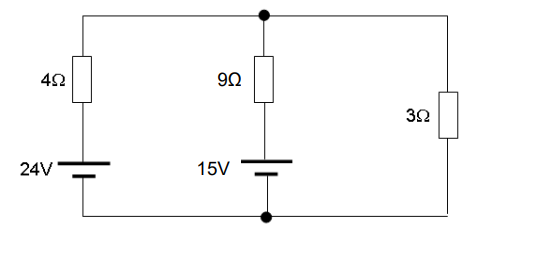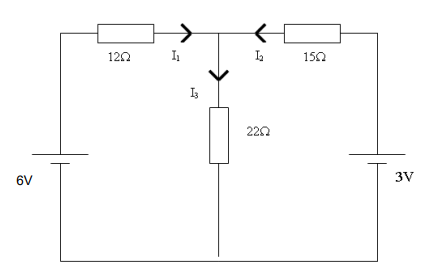- PSY4011 Developmental Psychology Assessment Brief | Arden University
- QSP7PCM Professional Cost Management Assignment 2 September 2025 | UCEM
- EGR2006M Control Systems Assignment 1 Brief | University of Lincoln
- MBA7066 Innovation and Entreprenuership Assignment Portfolio 2025 | UGM
- Contract Law Assessment 2 Problem Scenario 2025-26 | University Of Salford
- Operations & Supply Chain Management Assignment Brief : E-Commerce Supply Chain Efficiency
- Unit 1 Programming Assignment 2025-26 | ESOFT Metro Campus
- K/651/4745 Unit 1 Teaching My Subject Written Assignment | Britannia Education Group
- H/650/1099 Level 4 Academic Writing and Research Skills Assignment Brief | LSBU
- ASB-4012 Codding for Business Application Assignment – Project in R | Bangor University
- Unit: Team Management in Health and Social Care OTHM Level 5 Diploma Assignment
- BTEC Level 3 Unit 4 Programming Assignment – Concepts of Programming
- HSO4004 Principles of Care Assignment-1 and Assignment-2 Semester-1 September 2025-26
- 1031ENG-N Civil Engineering Construction Technology In-Course Assessment (ICA) Group Report | Teesside University (TU)
- MOD009382 Finance and Governance in Health and Social Care 011 Assessment Coursework Report | Anglia Ruskin University
- Geotechnical Engineering Assignment 2025/26 – University Of Surrey (UniS)
- Essentials of Adult Nursing Summative Assessment – University of Roehampton London (UoRL)
- BMP3006 Practical Digital Marketing Assessment 1 Individual Written Portfolio September 2025 – Regent College London
- CIPD_5HR03_24_01 5HR03 Reward for Performance and Contribution Level 5 Associate Diploma Learner Assessment Brief – Chartered Institute of Personnel and Development
- AF6010/LD6041 Strategic Management Accounting Assessment Brief AY2026 – Northumbria University Newcastle (NUN)
BTEC Unit 19 Electrical and Electronic Principles : Analysis of Circuits with Constant Voltages and Currents HNC Level 4 , Assignment 1, UK
| Subject | Analysis of Circuits with Constant Voltages and Currents |
Learning Outcomes and Assessment Criteria:
LO1 Apply an understanding of fundamental electrical quantities to analyse circuits with constant voltages and currents
P1 Apply the principles of circuit theory to simple circuits with constant sources, to explain the operation of that circuit.
M1 Apply the principles of circuit theory to a range of circuits with constant sources, to explain the operation of that circuit.
D1 Examine the operation of a range of circuits with constant sources, including power analysis, using relevant circuit theories.
Do You Need Assignment of This Question
Unit Learning Outcomes:
Apply an understanding of fundamental electrical quantities to analyse circuits with constant voltages and currents
Assignment Brief and Guidance:
Scenario
You have completed your engineering apprenticeship and have a position in the design department of a electronics consultancy company that offers a range of services. You have been asked by your line manager to reduce the layout of various circuits so that they fit to size of the PCB as specified by the customer. The customer has also asked if current and power can be calculated so they can specify the values in the product technical documents.
Apply the principles of circuit theory for the circuit shown and determine:
(i) the total resistance (RT).
(ii) the total current (IT) supplied by the battery.
(iii) the current flowing through each resistor.
(iv) the total power consumed by the circuit.
(v) Explain and examine the operation of the circuit.

Do You Need Assignment of This Question
Apply the principles of circuit theory for the circuit shown and determine:
(i) the total resistance (RT).
(ii) the total current (IT) supplied by the battery.
(iii) the current flowing through each resistor.
(iv) the total power consumed by the circuit.
(v) Explain and examine the operation of the circuit.

Two batteries A and B are connected in parallel, and a 1.5Ω resistor is connected across the battery terminals. The e.m.f. of and internal resistance of battery A are 12V and 2Ω respectively, and the corresponding values for battery B are 8V and 6Ω respectively. Apply Kirchhoff’s Laws to determine:
(i) the value and direction of the current in each battery.
(ii) the current flowing in and the p.d. across the 1.5Ω resistor.
(iii) Explain and examine the operation of the circuit.

Two batteries A and B are connected in parallel and a load of 3Ω is connected across their terminals. Battery A has an e.m.f. 24V and internal resistance of 4Ω; battery B has an e.m.f of 15V and an internal resistance 9Ω. Apply Kirchhoff’s Laws to determine:
(i) the values and directions of the currents in each branch of the circuit. (
ii) the p.d. across the external resistor i.e. the 3Ω resistor.
(iii) Explain and examine the operation of the circuit.
Buy Answer of This Assessment & Raise Your Grades

Apply Superpostion theory to the circuits below to determine the branch currents I1, I2 and I3 and explain and examine the operation of the circuits.


Are You Looking for Answer of This Assignment or Essay
Looking for UK assignment help with your Analysis of Circuits with Constant Voltages and Currents, Assignment 1? We offer expert BTEC assignment assistance for students, including Unit 19 Electrical and Electronic Principles Assignment examples. Get affordable, high-quality services with 100% human-written assignments—no AI involved! We promise A+ results, guaranteed on-time delivery, and plagiarism-free content. UK students can pay our experts to get the help they need to ace their courses!




